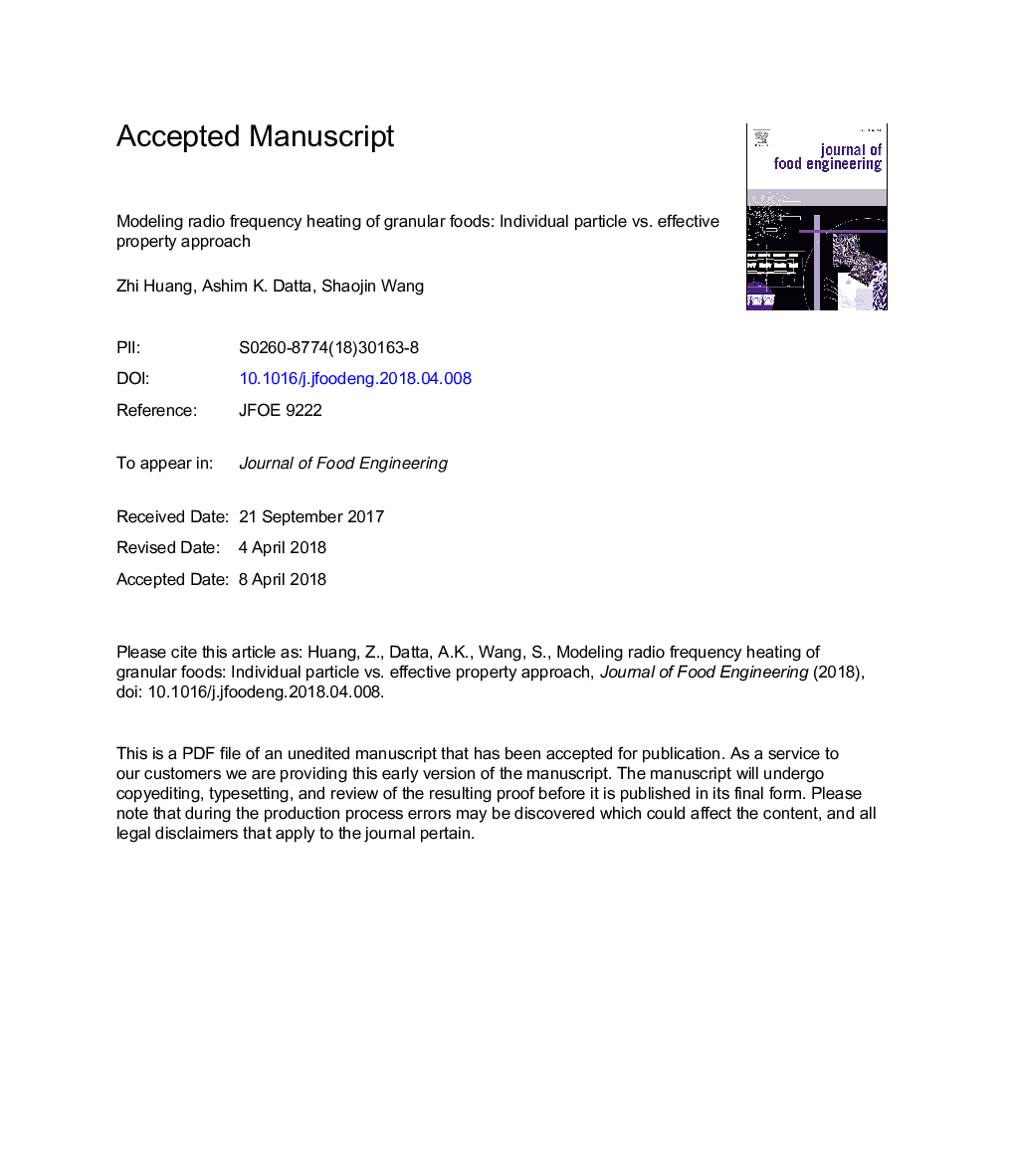| Article ID | Journal | Published Year | Pages | File Type |
|---|---|---|---|---|
| 6664473 | Journal of Food Engineering | 2018 | 51 Pages |
Abstract
Radio frequency (RF) heat treatment is one of the most promising methods for disinfestations and pasteurizations of granular foods but the combined effects of geometry and dielectric properties of granular materials on the non-uniformity of heating in RF are poorly understood. A coupled thermal-electromagnetic model for RF heating (27.12â¯MHz, parallel plate) of a single layer of spherical particles (1-5â¯cm diameter) was developed using two different formulations of the particles â an approach that considers the geometry of individual particles and a simplified approach that considers the effective properties of an air-particle mixture. The spherical particles, prepared from soybean powder, represented dry granular foods. Model predictions were validated using point and spatial temperature measurements. Results show that while an effective properties approach can be sufficient for smaller (â¼1â¯cm diameter) particles (with internal temperature range of 3â¯Â°C), consideration of the exact geometry (individual particles) would be needed for accurate prediction of heating non-uniformities (with internal temperature range of 39â¯Â°C) in larger diameters (diameter of 5â¯cm). Heating non-uniformities are present due to corner/edge heating, focusing effect, as well as contact heating between particles or between a particle and the tray. Results should greatly benefit computer-aided design and optimization of RF heating processes for granular products.
Related Topics
Physical Sciences and Engineering
Chemical Engineering
Chemical Engineering (General)
Authors
Zhi Huang, Ashim K. Datta, Shaojin Wang,
